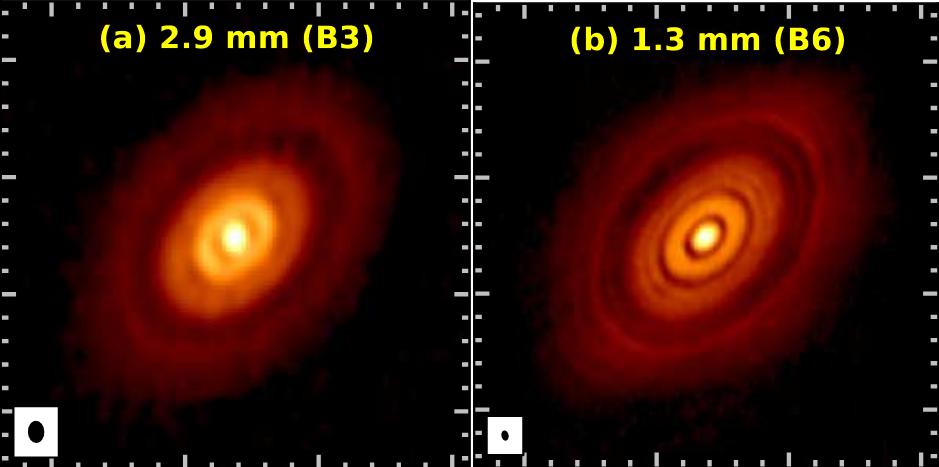
ALMA image of HL Tau, roughly 2 arcsec = 280 AU on a side, taken from ALMA Partnership et al., ApJ, 808, 3 (2015)
 Copyright © Michael Richmond.
This work is licensed under a Creative Commons License.
Copyright © Michael Richmond.
This work is licensed under a Creative Commons License.
Comets are members of our solar system which were formed long, long ago -- and which have remained (literally) frozen ever since, preserving a record of those early times.
Remember those pictures of young stars, surrounded by disks of gas and dust?
At the center of these proto-planetary disks are young stars, which light up and heat the material around them. That means that the inner regions of the disks are warm, while the outer regions are much cooler.
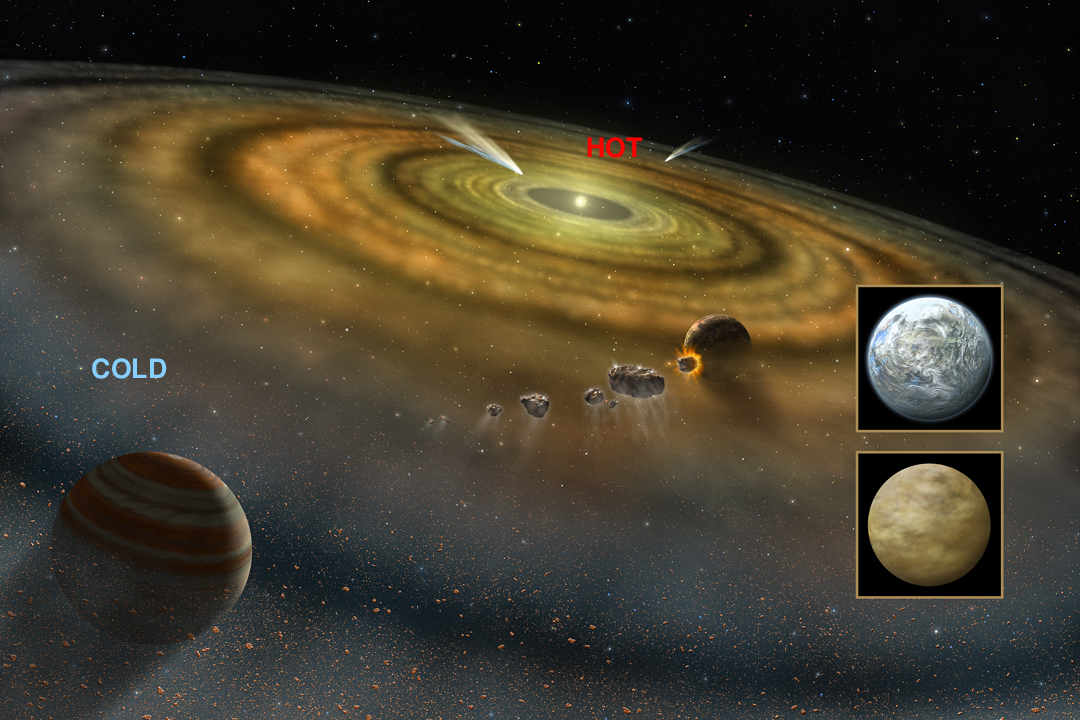
Image courtesy of
NASA/FUSE/Lynette Cook
What sort of objects will form at different locations in this young Solar System? Well, that depends on the materials which are available at each location. What are the most common elements in the universe -- and, in addition, the most common elements in the proto-solar nebula?
The table below lists some of the most common molecules to form in the proto-planetary disk. Can you compute the distance away from the Sun at which molecules of each gas might freeze and clump into solid little grains? Astronomers sometimes call distance at which grains would form the "snow line" for a given material.
molecule freezing point (Kelvin) "snow line" (AU)
------------------------------------------------------------------------
H2 14
H2O 273
CH4 112
NH3 196
CO2 195
CO 68
------------------------------------------------------------------------
Perhaps this equation might help you.

Please mark the locations of the various "snow lines" in the figure below.
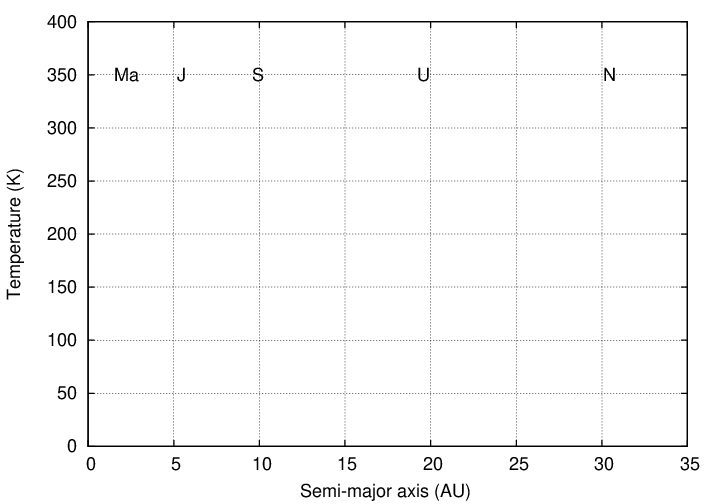
If we plot the temperature as a function of distance from the Sun, we find that it falls very quickly at first, and then more slowly at large distances.
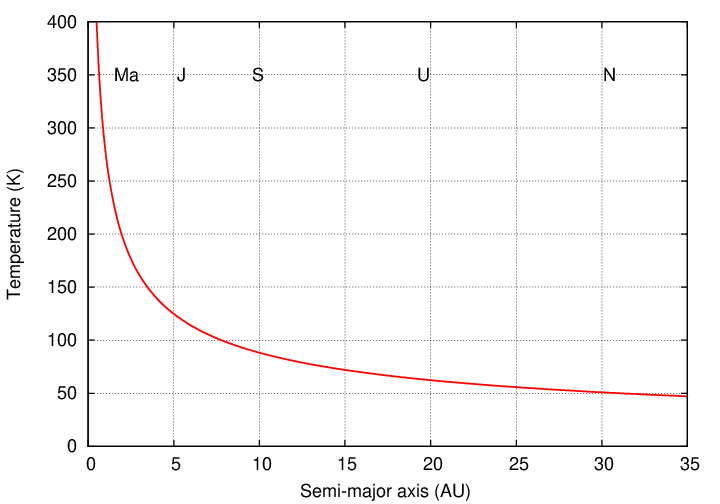
Your marks should look like this ...
What does all this mean? It means that in the early Solar System, when the gas and dust was gradually clumping into grains, and then pebbles, and then chunks, there was a big difference between those pebbles and chunks in the inner and outer regions:
Now, before we try to define all this relates to comets, we need to perform a little check of the English language. Consider the phrase basketball player.
Q: Is the person on the left below a basketball player?

Image courtesy of
AP and Sports Illustrated
Q: Is the person on the right below a basketball player?

Image courtesy of
Wikimedia
Q: Is the person on the right below a basketball player?

Image courtesy of
Pinterist
All those pictures show a fellow named Wilt Chamberlain, who was one of the most famous basketball players of his day, in college, with the Harlem Globetrotters, and in the NBA.
Q: Did you think all of those pictures of Wilt Chamberlain
showed a "basketball player?" Why or why not?
Okay, keep those thoughts in mind as we go back into the Solar System and talk about comets.
One way you might define a comet is simple:
???? A comet is a body formed mostly of icy material ???? ???? orbiting the Sun at large distances ????
By that definition, the object below would qualify. Tempel is an icy body about 10 km in diameter; the picture below is a composite of images taken by the Deep Impact spacecraft.
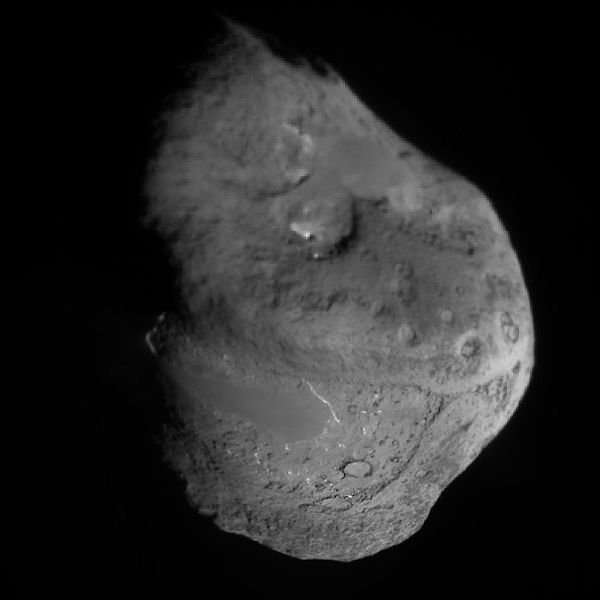
Image of 9P/Tempel courtesy of
NASA/JPL/UMD
And the potato-shaped body below would also count as a comet. This is Wild, photographed in 2004 by the Stardust spacecraft.
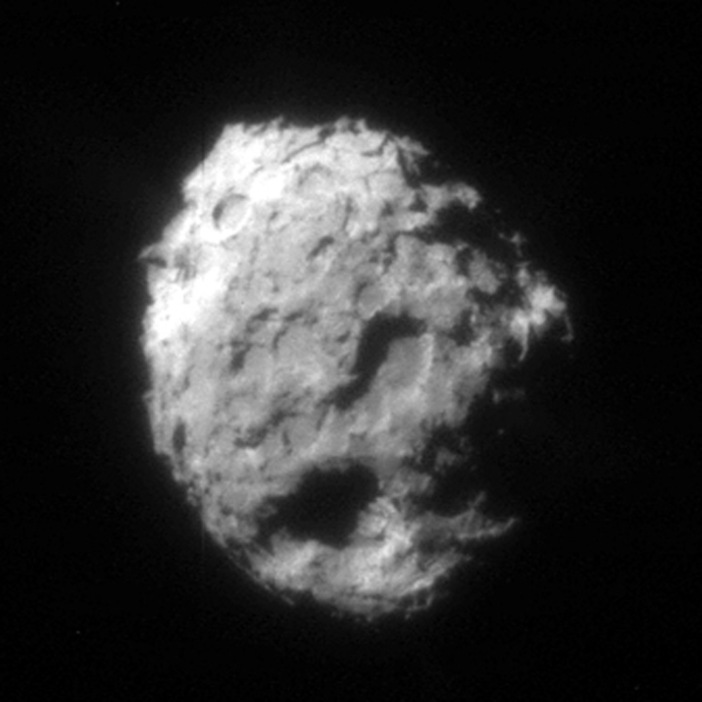
Image of 81P/Wild courtesy of
NASA and Wikimedia
Q: Do you feel cheated? Can those craggy, greyish objects
really be called comets?
Aren't comets supposed to look like something else?
Well, sure. When most people use the word "comet", they mean "big blazing star flying across the sky with a giant trail of light behind it." You know, like this:
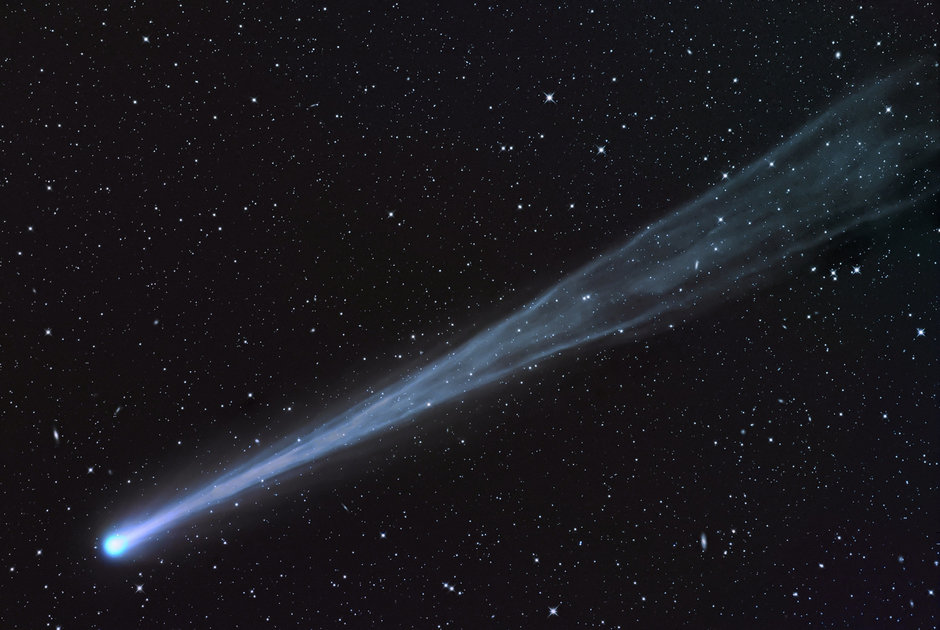
Image of Comet ISON courtesy of
Space.com and
Waldemar Skorupa
or this:
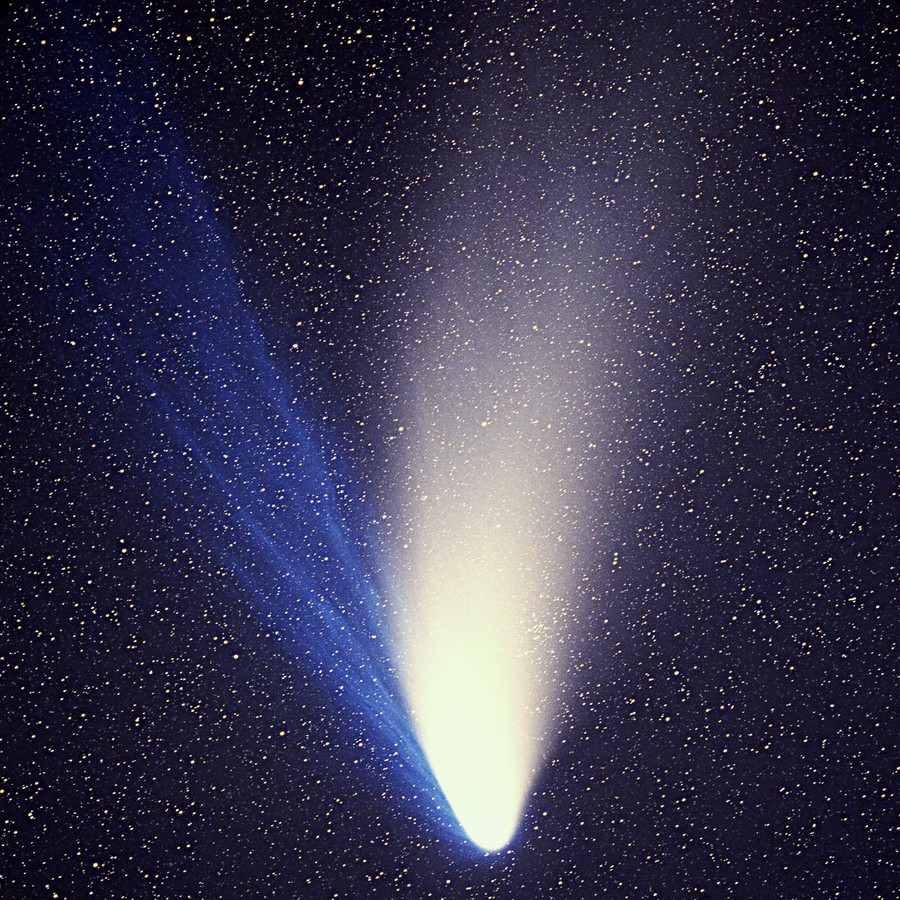
Image of Comet Hale-Bopp courtesy of
E. Kolmhofer, H. Raab; Johannes-Kepler-Observatory, Linz, Austria
But these beautiful bright shining beacons with long glowing tails really are the same as those icy potato-shaped objects. At least, they are if you look closely. Consider the view of Comet Halley obtained by ESA's Giotto mission.

Image courtesy of
ESA/MPAe Lindau
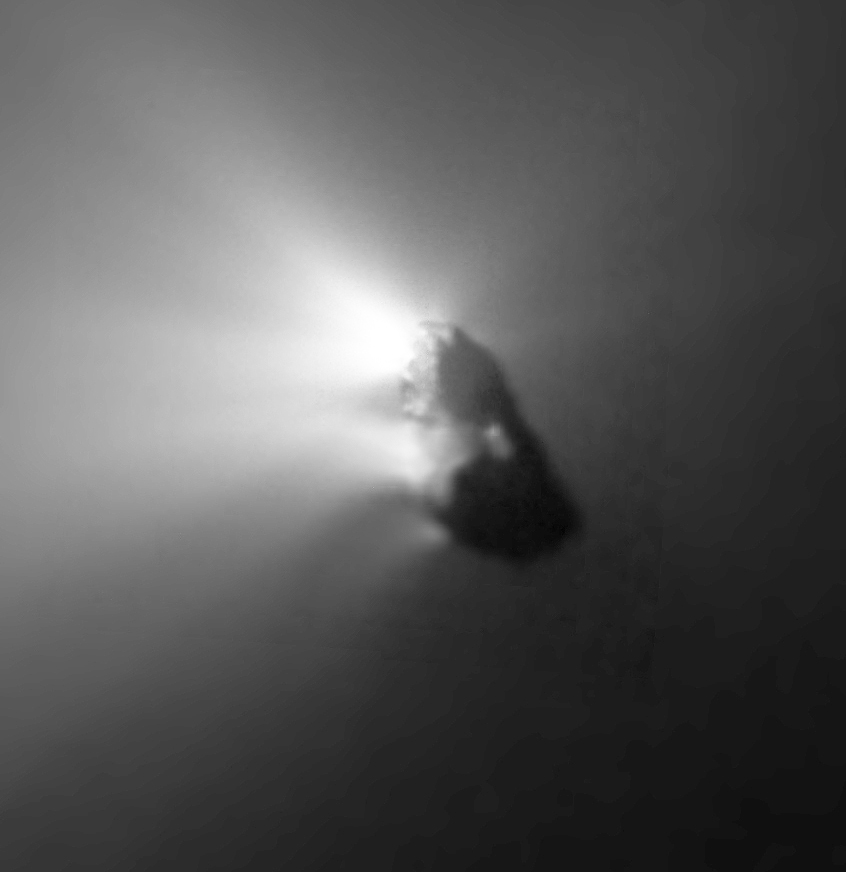
Image slightly modified from version provided by
ESA/MPS
What's the difference? Why do some comets (by my definition) just sit in space, lifeless and boring, while others produce jets of gas and dust and long glowing tails?
Q: Why are some "comets" dead and boring, but others
produce jets and tails?
The difference is simply their distance from the Sun
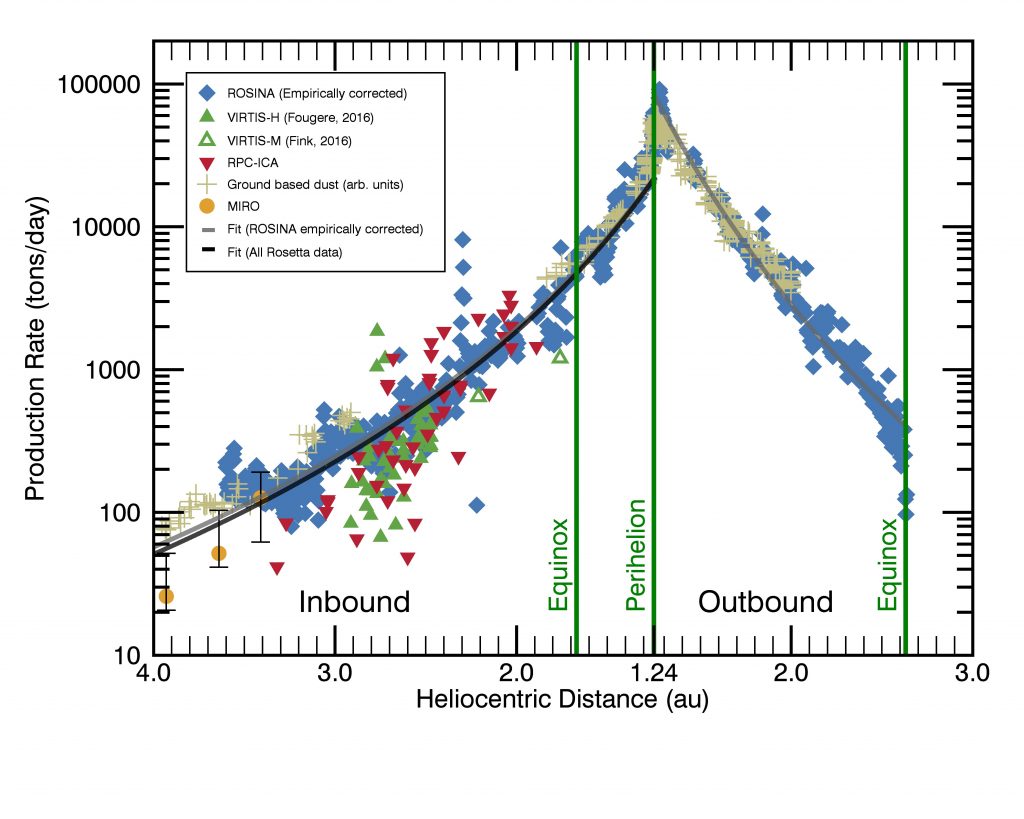
Image courtesy of
Hansen et al., MNRAS 462, S491 (2016)
I think that it's reasonable to describe all the objects shown above (well, except for Wilt Chamberlain and his fellow humans) as "comets." If any of those bodies happens to move into the inner Solar System, it will start to sublimate, produce jets and a tail, and turn into an "active" comet.
But if you look at "comets" when they are far from the Sun, it's hard to tell them apart from ordinary, rocky, asteroids. Consider the objects in the collection below.

Montage by Emily Lakdawalla. Data from NASA / JPL / JHUAPL / UMD / JAXA / ESA / OSIRIS team / Russian Academy of Sciences / China National Space Agency. Processed by Emily Lakdawalla, Daniel Machacek, Ted Stryk, Gordan Ugarkovic.
I've boosted the contrast on objects in the bottom row
of the large version. -- MWR
Humans have been watching comets and tracking their motions to thousands of years. Over the past few hundred years, we've been able to measure their motions precisely, and follow them with telescopes even when they grow too faint to be seen with the naked eye. So, we have information on the orbits of many comets.
Back in the 1940s and 1950s, an astronomer named Jan Oort noticed something peculiar. When he looked at the distribution of the orbital sizes of comets, he found that many of them -- a LOT of them -- had very large orbits: orbits which were far, far larger than those of any planets or asteroids. He also noticed that the orbits were not confined to the plane of the planetary orbits; some comets came from far above, or far below.
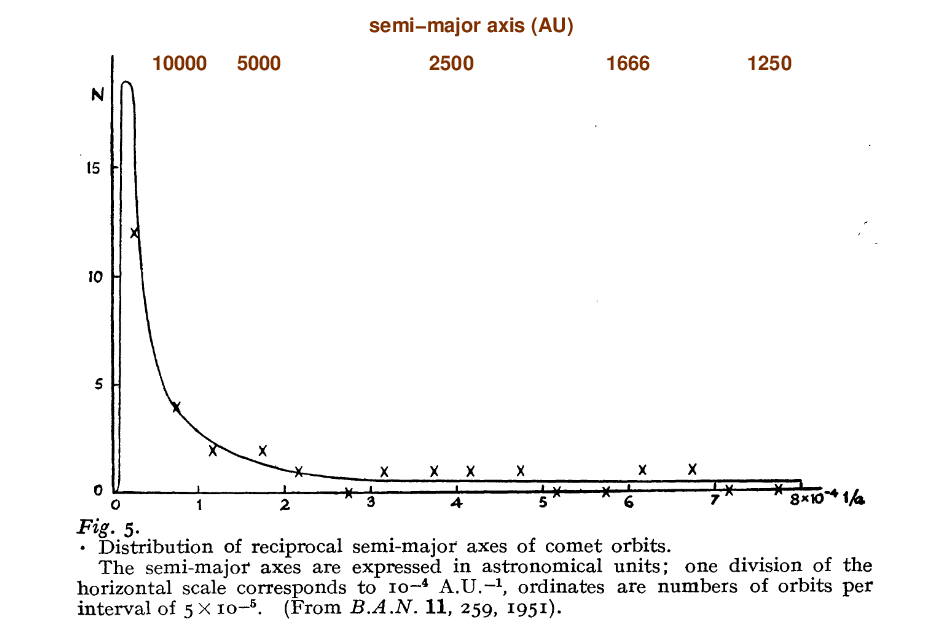
Figure 5 taken from
Oort, Observatory 71, 129 (1951)
Decades later, scientists continue to see the same pattern: many comets have orbits which are thousands or even tens of thousands of AU in size.
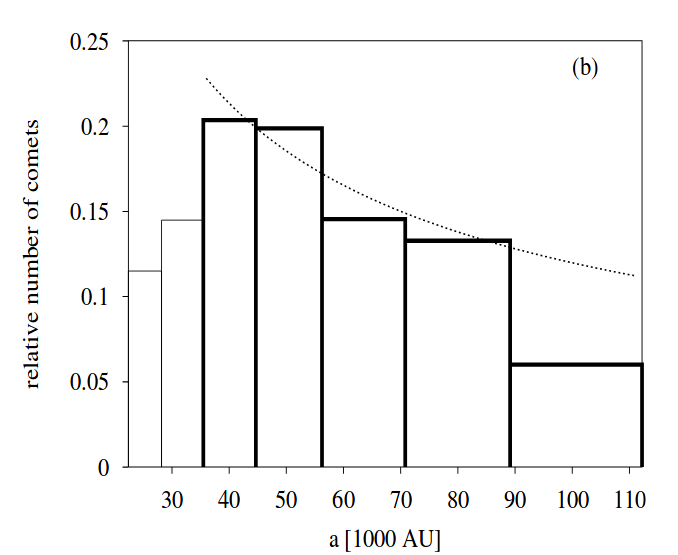
Figure 3b taken from
Neslusan and Jakubik, A&A 437, 1093 (2005)
Oort wondered "why should so many comets have orbits which are so large?" He made a hypothesis:
Oort's hypothesis: there is a cloud of comets surrounding the Sun
in all directions, at distances ranging from
tens to hundreds of thousands of AU
(distance to the nearest star is roughly 300,000 AU)
In other words, a picture something like this:
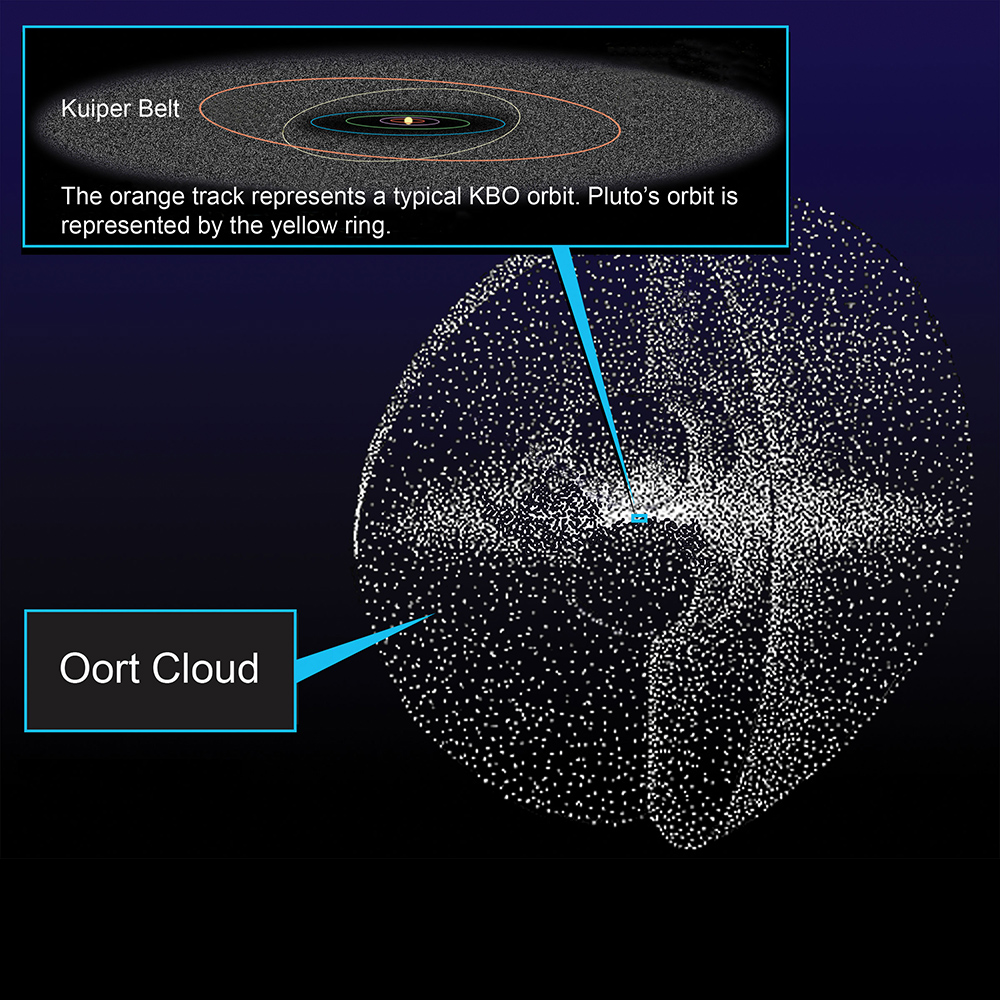
Image courtesy of
NASA
Why did I stress hypothesis? Because Oort's guess was a good one -- a really good one -- but it was still in many ways a claim unsupported by direct evidence.
Q: Why can't astronomers test Oort's hypothesis by taking
pictures of the comets in the cloud?
The trouble is that the comets are so far from the Sun that
The result is that even our largest telescopes cannot detect any possible comets at distances of 10,000 AU or 100,000 AU. At the moment, this is still just an idea.
But why would there be a bunch of comets way, way out in space? Oort's idea involved several steps:
The only time we see these comets is when they happen to reach the section of their orbits which are close to the Sun.
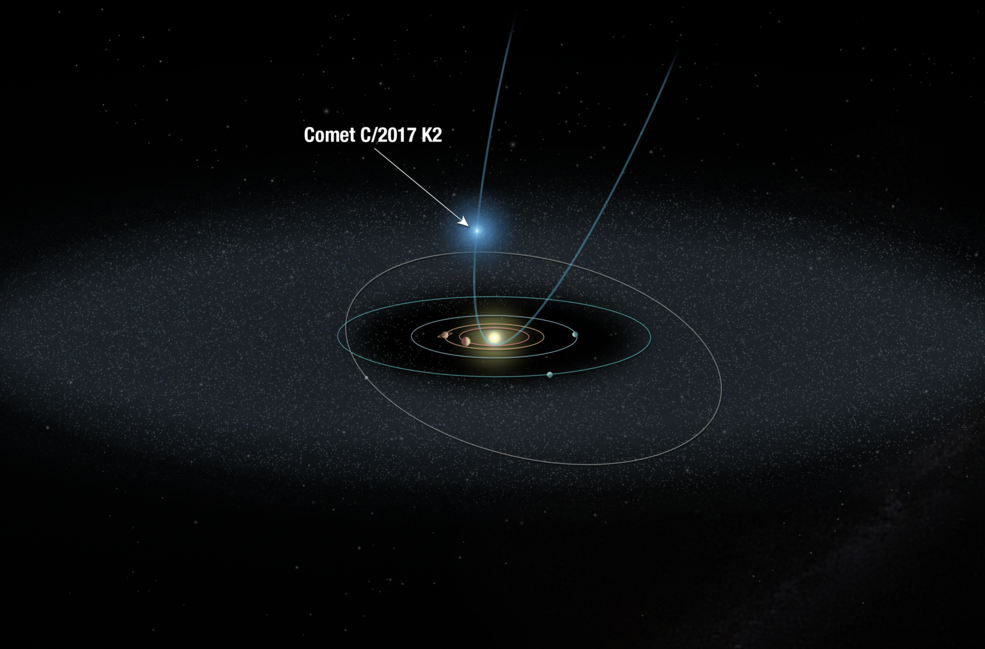
Image courtesy of
NASA, ESA, and A. Feild (STScI)
Q: Suppose one comet's orbit has a semi-major axis of size 30,000 AU.
How long does it take to make one full revolution?
Q: The comet spends almost all of that time at the very farthest
reaches of its elliptical orbit, and very little time
flying past Jupiter, Mars, Earth, and so forth.
Why? Is there some scientific justification for moving
very slowly when very far from the Sun?
So, the idea is that a very large number of comets are floating far, far from the Sun on long, thin, elliptical orbits. They are so far from the Sun that every few million years, a random star in our Galaxy which is just flying past our Solar System may come relatively close to some of them. The gravitational perturbations caused by a passing star might modify the orbits of some of the comets slightly ... and some of those modified orbits might end up passing much closer to the Sun than they originally would.
In other words, every ten or hundred million years, a particularly close passage by another star might cause a bunch of comets to come zooming into the inner Solar System, all at once. Tens or hundreds or thousands of giant chunks of icy material flying through space at 50 or 100 km/sec.
That might cause ... problems.
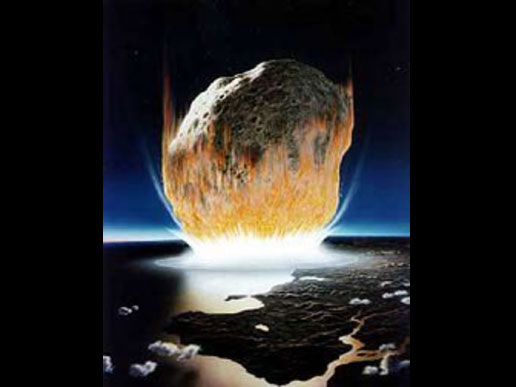
Image courtesy of
NASA
In 2014, a European spacecraft caught up to and orbited the comet 67P/Churyumov-Gerasimenko, and even launched a small lander to touch down on the surface.
You can read about the mission and just a few highlights at
Please watch the very cute, but informative, movies!
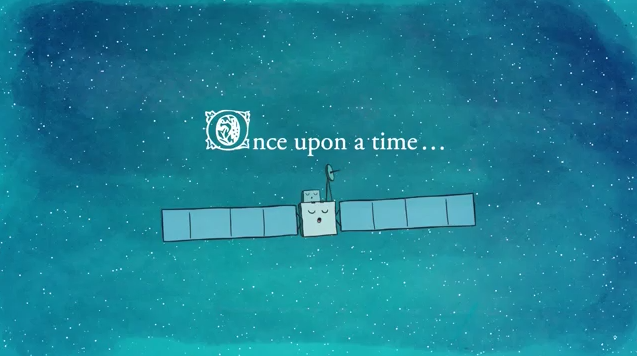
Image and movie courtesy of
ESA
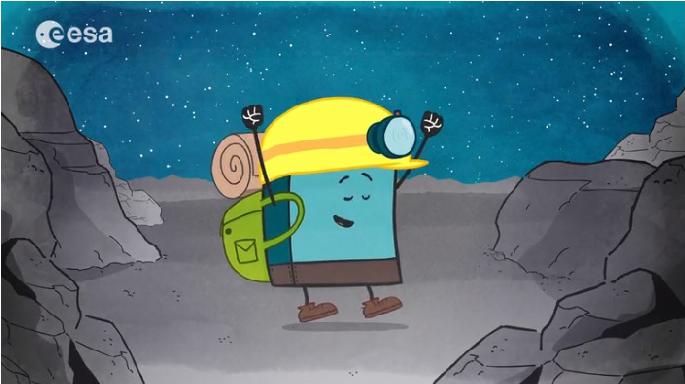
Image and movie courtesy of
ESA
You may be wondering -- did Philae wake up as the comet moved closer to the Sun? The answer is "Yes, but ... "
The lander made contact with the comet on Nov 12, 2014, and conducted experiments for about three days. After that, however, its batteries ran down, and it went into hibernation.
On June 13, 2015, the orbiter received signals from the lander -- Philae was awake again! Over the next few weeks, the lander was able to send brief transmissions to Rosetta, but contact was also too short to send commands for it to carry out any scientific activities. After July 9, 2015, no further signals were received.
Sigh.
This December, we observers in the Northern Hemisphere will receive an early present when comet 46P/Wirtanen appears in the evening skies. This particular comet will come much closer to the Earth than most ...
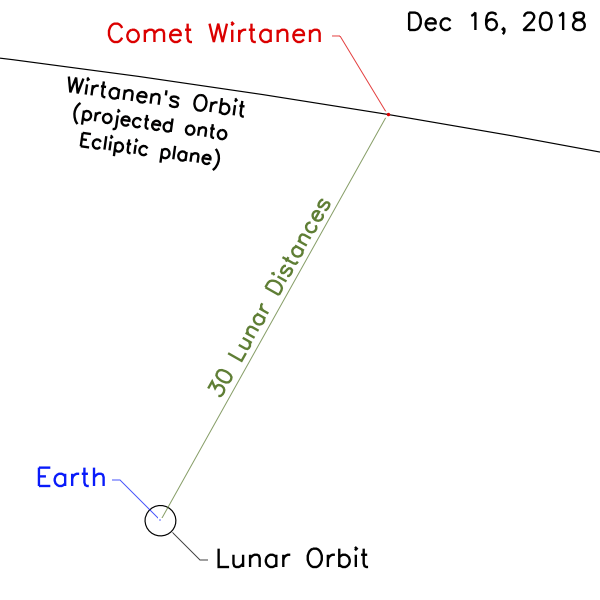
Image courtesy of
University of Maryland
The comet may be visible with the naked eye, and very very likely will be easy to see with binoculars. It will rise higher in the sky throughout the month of December, making its closest approach on December 16.
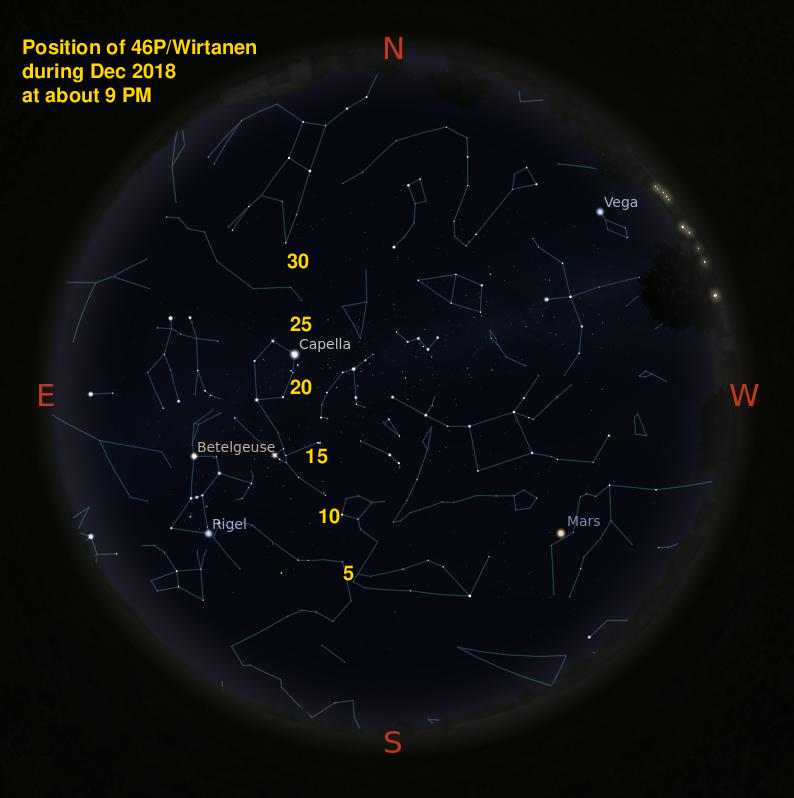
 Copyright © Michael Richmond.
This work is licensed under a Creative Commons License.
Copyright © Michael Richmond.
This work is licensed under a Creative Commons License.